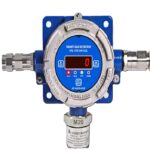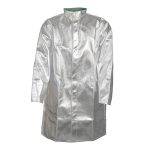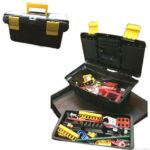Your list is empty, add products to the list to send a request
How Do Most Smoke Detectors Work?

06
May
Smoke detectors are essential devices that play a critical role in safeguarding lives and property by providing early warnings of potential fires. Understanding their functionality, types, and maintenance can significantly enhance safety measures in homes and workplaces.
Understanding Smoke Detectors: The Basics
Smoke detectors are devices designed to sense smoke, typically as an indicator of fire. They are usually housed in plastic enclosures and can be powered by batteries or connected to the building’s electrical system. When smoke is detected, the alarm sounds, alerting occupants to the potential danger.
Types of Smoke Detectors
There are primarily two types of smoke detectors, each utilizing different technologies to detect smoke particles:
1. Ionization Smoke Detectors
Ionization detectors are equipped with a small amount of radioactive material placed between two electrically charged plates. This setup ionizes the air and creates a current between the plates. When smoke enters the chamber, it disrupts this current, triggering the alarm. These detectors are particularly responsive to flaming fires.
2. Photoelectric Smoke Detectors
Photoelectric detectors use a light source and a light sensor positioned at an angle inside the sensing chamber. In the absence of smoke, the light passes in a straight line. When smoke enters the chamber, it scatters the light, directing it toward the sensor and activating the alarm. These detectors are more sensitive to smoldering fires.
For comprehensive protection, it’s advisable to use dual-sensor smoke detectors that incorporate both ionization and photoelectric technologies.
How Smoke Detectors Detect Smoke
Smoke detectors identify smoke particles in the air through their respective sensing technologies. Ionization detectors are more responsive to smaller smoke particles from flaming fires, while photoelectric detectors are better at detecting larger particles from smoldering fires. By detecting these particles, the detectors can provide early warnings, allowing occupants to evacuate and call emergency services promptly.
Smoke Detectors vs. Heat Detectors
While smoke detectors sense smoke particles, heat detectors respond to changes in temperature. Heat detectors are designed to minimize property damage by reacting to the change in temperature caused by a fire. They are less sensitive than smoke detectors and are typically used in areas where smoke detectors may cause false alarms, such as kitchens or garages.
Importance of Proper Placement
The effectiveness of smoke detectors significantly depends on their placement within a building. Key guidelines include:
- Install smoke detectors inside each bedroom, outside each sleeping area, and on every level of the home, including the basement.
- Place detectors on the ceiling or high on the wall, as smoke rises.
- Avoid installing detectors near windows, doors, or ducts where drafts might interfere with their operation.
- Keep detectors at least 10 feet away from cooking appliances to reduce false alarms.
Regular maintenance, including monthly testing and annual battery replacement, ensures optimal functionality.
Advanced Smoke Detection: The Edward SIGA-OSD Addressable Smoke Detector
For those seeking advanced fire detection solutions, the Edward SIGA-OSD Addressable Smoke Detector offers state-of-the-art technology. This device provides precise detection capabilities and integrates seamlessly with building safety systems, making it ideal for commercial and industrial applications.
Frequently Asked Questions
1. What do smoke detectors use to detect smoke?
A: Smoke detectors utilize either ionization or photoelectric technologies to detect smoke particles in the air. Ionization detectors are sensitive to small particles from flaming fires, while photoelectric detectors are more responsive to larger particles from smoldering fires.
2. Do smoke detectors actually detect smoke or heat?
A: Smoke detectors are designed to detect smoke particles, not heat. They sense the presence of smoke in the air, providing early warnings of potential fires. Heat detectors, on the other hand, respond to changes in temperature and are used in specific areas where smoke detectors may not be suitable.
3. What if the smoke detector blinks red?
A: A blinking red light on a smoke detector can indicate several things:
1. Normal Operation: Some detectors blink red to show they are functioning correctly.
2. Low Battery: A red blink accompanied by a chirping sound often signals a low battery that needs replacement.
3. Recent Alarm: After detecting smoke, the detector may blink red to indicate a recent alarm event.
4. Malfunction: Continuous blinking without an alarm may suggest a malfunction, requiring maintenance or replacement.
Regular testing and maintenance can help determine the cause of the blinking and ensure the detector operates effectively.
Conclusion
Understanding how smoke detectors work and ensuring their proper installation and maintenance are crucial steps in enhancing fire safety. By selecting the appropriate type of detector and placing it correctly within your building, you can provide early warnings and protect lives and property from the devastating effects of fires.
For high-quality fire safety products and expert advice, visit Firesupplies, India’s premier online store for fire product supplies. Explore our wide range of smoke detectors, including the advanced Edward SIGA-OSD Addressable Smoke Detector, and ensure your safety today.



























